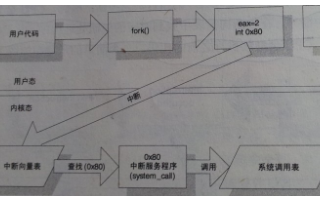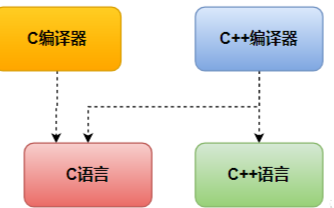?本期給大家介紹了一下Linux下system()函數(shù)的正確用法!
廢話不多說,相信你肯定也在system接口上填過坑!先上一把它的正確操作:
#include
#include
#define Debuging(fmt, arg...) printf(fmt, ##arg)
int new_system(char *cmd, char *resultout, int buflen, int *lenout)
{
int status = system(cmd);
Debuging("cmd=%s\n", cmd);
if (-1 == status)
{
Debuging("system error!\n");
}
else
{
Debuging("exit status value = [0x%x]\n", status);
if (WIFEXITED(status))
{
if (0 == WEXITSTATUS(status))
{
Debuging("run shell script successfully.\n");
return 0;
}
else
{
Debuging("run shell script fail, script exit code: %d\n", WEXITSTATUS(status));
}
}
else
{
Debuging("exit status = [%d]\n", WEXITSTATUS(status));
}
}
return -1;
}
示例代碼中很好地展示了,如何判斷system接口的返回值!
以下是linux man中關(guān)于system接口的介紹:
SYSTEM(3) Linux Programmer's Manual SYSTEM(3)
NAME
system - execute a shell command
SYNOPSIS
#include
int system(const char *command);
DESCRIPTION
The system() library function uses fork(2) to create a child process that executes the shell command specified in command using
execl(3) as follows:
execl("/bin/sh", "sh", "-c", command, (char *) 0);
system() returns after the command has been completed.
During execution of the command, SIGCHLD will be blocked, and SIGINT and SIGQUIT will be ignored, in the process that calls system()
(these signals will be handled according to their defaults inside the child process that executes command).
If command is NULL, then system() returns a status indicating whether a shell is available on the system
RETURN VALUE
The return value of system() is one of the following:
* If command is NULL, then a nonzero value if a shell is available, or 0 if no shell is available.
* If a child process could not be created, or its status could not be retrieved, the return value is -1.
* If a shell could not be executed in the child process, then the return value is as though the child shell terminated by calling
_exit(2) with the status 127.
* If all system calls succeed, then the return value is the termination status of the child shell used to execute command. (The
termination status of a shell is the termination status of the last command it executes.)
In the last two cases, the return value is a "wait status" that can be examined using the macros described in waitpid(2). (i.e.,
WIFEXITED() WEXITSTATUS() and so on).
system() does not affect the wait status of any other children.
ATTRIBUTES
For an explanation of the terms used in this section, see attributes(7).
┌──────────┬───────────────┬─────────┐
│Interface │ Attribute │ Value │
├──────────┼───────────────┼─────────┤
│system() │ Thread safety │ MT-Safe │
└──────────┴───────────────┴─────────┘
CONFORMING TO
POSIX.1-2001, POSIX.1-2008, C89, C99.
NOTES
system() provides simplicity and convenience: it handles all of the details of calling fork(2), execl(3), and waitpid(2), as well as
the necessary manipulations of signals; in addition, the shell performs the usual substitutions and I/O redirections for command.
The main cost of system() is inefficiency: additional system calls are required to create the process that runs the shell and to
execute the shell.
If the _XOPEN_SOURCE feature test macro is defined (before including any header files), then the macros described in waitpid(2)
(WEXITSTATUS(), etc.) are made available when including .
As mentioned, system() ignores SIGINT and SIGQUIT. This may make programs that call it from a loop uninterruptible, unless they
take care themselves to check the exit status of the child. For example:
while (something) {
int ret = system("foo");
if (WIFSIGNALED(ret) &&
(WTERMSIG(ret) == SIGINT || WTERMSIG(ret) == SIGQUIT))
break;
}
Do not use system() from a program with set-user-ID or set-group-ID privileges, because strange values for some environment vari‐
ables might be used to subvert system integrity. Use the exec(3) family of functions instead, but not execlp(3) or execvp(3). sys‐
tem() will not, in fact, work properly from programs with set-user-ID or set-group-ID privileges on systems on which /bin/sh is bash
version 2, since bash 2 drops privileges on startup. (Debian uses a modified bash which does not do this when invoked as sh.)
In versions of glibc before 2.1.3, the check for the availability of /bin/sh was not actually performed if command was NULL; instead
it was always assumed to be available, and system() always returned 1 in this case. Since glibc 2.1.3, this check is performed
because, even though POSIX.1-2001 requires a conforming implementation to provide a shell, that shell may not be available or exe‐
cutable if the calling program has previously called chroot(2) (which is not specified by POSIX.1-2001).
It is possible for the shell command to terminate with a status of 127, which yields a system() return value that is indistinguish‐
able from the case where a shell could not be executed in the child process.
SEE ALSO
sh(1), sigaction(2), sigprocmask(2), fork(2), wait(2), exec(3), signal(7)
COLOPHON
This page is part of release 4.04 of the Linux man-pages project. A description of the project, information about reporting bugs,
and the latest version of this page, can be found at http://www.kernel.org/doc/man-pages/.
?
總結(jié):
1.Linux系統(tǒng)接口使用前務(wù)必了解其接口說明;
2.類似system接口,返回值為0的時(shí)候,并不代表命令一定執(zhí)行成功了,這個(gè)需要特別注意;
3.讀懂man說明,也是一項(xiàng)基本的技能。
好了,本期的介紹就到這里了,你掌握了嗎?
-
接口
+關(guān)注
關(guān)注
33文章
8497瀏覽量
150834 -
Linux
+關(guān)注
關(guān)注
87文章
11228瀏覽量
208925 -
System
+關(guān)注
關(guān)注
0文章
165瀏覽量
36885 -
C語言
+關(guān)注
關(guān)注
180文章
7598瀏覽量
136188
發(fā)布評(píng)論請(qǐng)先 登錄
相關(guān)推薦
怎么在C語言調(diào)用系統(tǒng)指令
C語言使用函數(shù)調(diào)用的知識(shí)點(diǎn)
請(qǐng)問為什么要在Linux下學(xué)習(xí)C語言?
你真的都懂C語言嗎
Linux下C語言編程入門教程
淺談C、C++ 和 ARM 匯編語言之間的調(diào)用
需要深入了解linux下的system()函數(shù)
你知道Linux系統(tǒng)調(diào)用的原理

linux c使用system調(diào)用shell腳本
Linux下C語言編程入門教程詳細(xì)說明





 【Linux+C語言】你真的了解system接口的調(diào)用嗎?
【Linux+C語言】你真的了解system接口的調(diào)用嗎?











評(píng)論